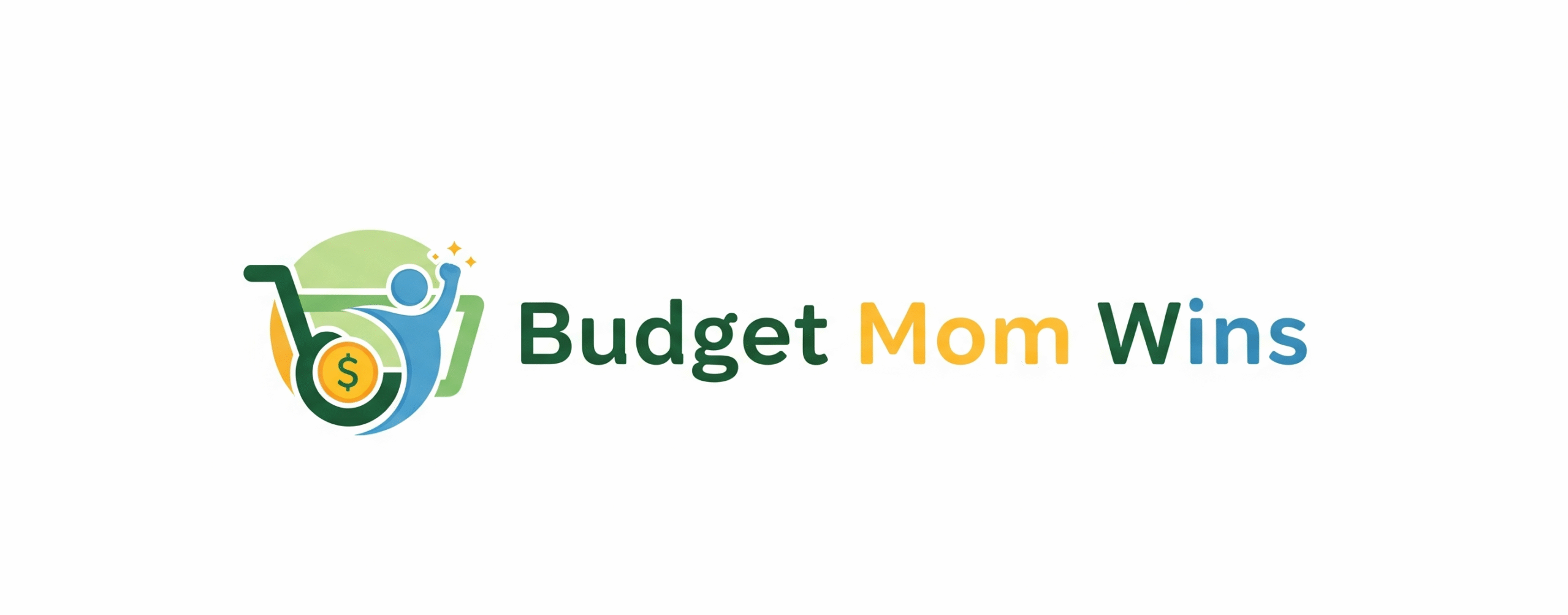Extreme Frugal Living Tips for Family of 5 Saving for House Down Payment Fast is your guide to mastering the art of frugality while aiming for a significant financial goal. For families of five, saving for a house down payment can seem overwhelming, but with the right strategies and mindset, it’s entirely achievable. Embracing an extreme frugal living lifestyle not only helps cut costs but also fosters a deeper understanding of financial priorities and values.
This comprehensive overview delves into practical budgeting strategies, innovative grocery saving techniques, and effective ways to reduce utility costs. By adopting a frugal mindset and exploring creative income-generating ideas, families can accelerate their savings journey while maintaining a fulfilling family life.
Overview of Extreme Frugal Living
Extreme frugal living is a lifestyle choice aimed at minimizing expenses to achieve significant financial goals, such as saving for a house down payment. For a family of five, this approach becomes essential, allowing them to maximize their savings while still providing for their daily needs. Choosing to adopt extreme frugality can lead to substantial financial freedom, minimizing stress related to finances and paving the way toward home ownership.Embracing extreme frugality requires a significant mindset shift.
Families must prioritize long-term goals over short-term desires, fostering a culture of savings and resourcefulness. This shift involves re-evaluating spending habits, learning to live with less, and focusing on what truly matters. By cultivating a sense of gratitude and shifting perspectives on consumption, families can find fulfillment outside of material possessions.
Common Misconceptions about Frugal Living
There are several misconceptions surrounding frugal living that may deter families from adopting this beneficial lifestyle. Understanding these misconceptions and their clarifications can empower families in their journey toward extreme frugality.
Transitioning to a stay-at-home mom can be daunting, but with the right planning, it can be smooth. My experience detailed in the Financial Preparation Guide illustrates how careful financial preparation made all the difference. It’s crucial to create a budget and plan ahead to ensure a comfortable lifestyle while focusing on family.
- Frugal living means living poorly: Many believe that being frugal equates to a low quality of life. In reality, it promotes a more intentional lifestyle, emphasizing experiences over material goods.
- Frugality is only for those in financial trouble: While frugality can help those facing financial difficulties, it is also a proactive approach for anyone wanting to build wealth and secure their financial future.
- Extreme frugality restricts family fun: Contrary to this belief, extreme frugality can encourage creativity in family activities. It often leads to discovering low-cost or free entertainment options that families can enjoy together.
- Frugal living is time-consuming: While some may perceive the lifestyle as requiring excessive planning and effort, many frugal practices can be seamlessly integrated into daily routines, saving both time and money in the long run.
Frugal living empowers families to make intentional choices, building a foundation for financial stability and future homeownership.
The benefits of extreme frugality extend beyond merely saving money. It fosters a deeper understanding of financial management, encourages teamwork within the family, and builds resilience as families navigate challenges together. Adopting this lifestyle is not just about cutting corners; it’s about valuing financial literacy and making conscious decisions that align with long-term aspirations.
Budgeting Strategies
Creating a solid budgeting plan is essential for a family of five aiming to save for a house down payment swiftly. This process involves understanding income, tracking expenses, and prioritizing savings effectively. With a well-structured approach, families can maximize their savings while maintaining a comfortable lifestyle.Developing a budget isn’t just about restricting spending; it’s about making informed choices that align with your financial goals.
By implementing specific strategies, families can cultivate a habit of saving that will bring them closer to their goal of homeownership. Here are several effective budgeting strategies that families can adopt to expedite their savings.
Creating a Detailed Budget Plan, Extreme Frugal Living Tips for Family of 5 Saving for House Down Payment Fast
A detailed budget plan should reflect both your income and all expenses, highlighting the importance of saving for the house down payment. Families can utilize various budgeting methods, such as the zero-based budget, where every dollar has a purpose, or the 50/30/20 rule, which allocates 50% of income to needs, 30% to wants, and 20% to savings.To establish an effective budget, follow these steps:
- Calculate your total household income, including salaries, side hustles, and any additional revenue sources.
- List all monthly expenses, breaking them down into fixed costs (like rent, utilities, and insurance) and variable expenses (like groceries, entertainment, and dining out).
- Identify discretionary spending and set limits to tighten expenses without sacrificing quality of life.
- Assign a specific savings target for the house down payment, determining how much needs to be saved each month to reach your goal within your desired timeframe.
This structured approach helps families gain complete visibility over their finances, ensuring that they can allocate sufficient funds each month towards their home purchase.
Tracking Expenses Effectively
Monitoring spending can be a cumbersome task, but effective expense tracking is crucial to adhering to your budget. Implementing practical methods for tracking expenses can facilitate better financial management.Consider these techniques for efficient expense tracking:
- Use budgeting apps like Mint or YNAB (You Need a Budget) to categorize expenses automatically and provide real-time analysis.
- Maintain a dedicated spending journal where all purchases are logged. This can be done either physically or digitally, depending on preference.
- Review bank statements weekly to spot trends in spending and identify areas where adjustments can be made.
- Set aside time each week to reconcile your budget, ensuring that recorded expenses align with your financial plan.
Implementing these strategies ensures that families remain mindful of their spending habits and can make necessary adjustments to stay on track with their savings goals.
Prioritizing Essential Expenses
When a family is focused on saving for a significant goal, such as a house down payment, it becomes crucial to differentiate between essential and non-essential expenses. Prioritizing spending can significantly enhance savings potential.To effectively prioritize essential expenses, consider the following:
- Identify non-negotiable monthly expenses, including housing, utilities, groceries, and childcare, which are essential for daily living.
- Evaluate discretionary expenses, such as entertainment, dining out, and subscription services, and determine which can be reduced or eliminated.
- Implement a “30-day rule” for non-essential purchases, allowing time to reflect on whether an item is genuinely needed before buying.
- Seek alternatives for expensive habits or activities, like hosting potlucks instead of dining out or utilizing community resources for entertainment.
By focusing on what is truly necessary, families can streamline their budgets, redirecting funds towards their ultimate goal of homeownership.
Grocery Saving Techniques
In the journey towards extreme frugal living, grocery shopping can significantly impact your family’s budget. By implementing effective grocery saving techniques, a family of five can drastically reduce their monthly expenses while maintaining a healthy diet. The following strategies highlight ways to maximize savings and minimize waste, making every grocery dollar count.
Bulk Buying Advantages
Purchasing items in bulk is an effective strategy for families looking to save. This method involves buying larger quantities of products, often at a reduced price per unit. For a family of five, bulk buying can lead to significant savings on frequently used items like grains, canned goods, and household products.
The Samsung Galaxy Z Fold 4 is a game-changer for productivity enthusiasts. This foldable tablet phone has been rated highly by tech experts, making it an ideal choice for those who need a versatile device that can handle multitasking with ease. Experience a new level of productivity at your fingertips.
- Cost Efficiency: By buying in larger quantities, families often benefit from discounts that aren’t available for smaller packages, leading to long-term savings.
- Reduced Trips: Fewer shopping trips mean less time spent in stores and lower transportation costs, contributing to both money and time savings.
- Stocking Essentials: Keeping a well-stocked pantry minimizes the likelihood of last-minute purchases of overpriced items during emergencies.
Meal Planning Strategies
Effective meal planning is essential for minimizing food waste and maximizing savings. By organizing meals for the week, families can ensure that they purchase only what is necessary, preventing impulse buys and excess food that may go to waste.
- Weekly Menu: Create a weekly menu that incorporates ingredients already available at home, allowing for creative and budget-friendly meals.
- Batch Cooking: Prepare larger portions of meals that can be frozen for later use, ensuring meals are ready to go without additional costs.
- Utilize Leftovers: Plan meals that use leftover ingredients creatively, such as turning roasted chicken into soup or salad the next day.
Utilizing Coupons and Cashback Apps
Using coupons and cashback apps can be a game-changer for grocery budgets. These tools help families to save money on everyday purchases, making it easier to stick to a budget.
- Finding Coupons: Many grocery stores offer digital coupons through their apps or websites, allowing for easy access to savings on items you regularly buy.
- Cashback Apps: Apps like Ibotta and Rakuten provide cashback on grocery purchases. By scanning receipts, families can earn money back on eligible items.
- Combining Discounts: Stack manufacturer coupons with store sales for maximum savings, further reducing the overall grocery bill.
“Effective grocery shopping is not just about spending less; it’s about making informed decisions that lead to sustainable savings.”
Reducing Utility Costs
Utility costs can significantly impact a family’s budget, especially when saving for a house down payment. By implementing strategic measures to lower electricity and water bills, families can redirect those savings into their house fund. Understanding how to conserve energy and water not only helps in financial savings but also contributes to a more sustainable lifestyle.Investing in energy-efficient appliances plays a crucial role in reducing long-term utility costs.
Energy-efficient appliances use less energy while providing the same performance as their conventional counterparts. For example, Energy Star-rated appliances can save families hundreds of dollars annually on electricity bills. Additionally, these appliances often come with tax incentives, making them an even more appealing choice for frugal families.
If you’re looking for a budget-friendly option, consider the Redmi 9T. With a large battery and expert approval, this entry-level smartphone offers exceptional value for those who want reliability without breaking the bank. It’s perfect for everyday tasks and keeps you connected throughout the day.
Actions to Lower Electricity and Water Bills
Implementing specific actions can lead to significant savings on utility bills. Below are some effective strategies to consider:
- Unplug unused electronics: Devices that are plugged in but not in use can still consume power, often referred to as “phantom loads.” Unplugging them can save up to 10% on energy bills.
- Use LED lighting: Replacing incandescent bulbs with LED lighting can reduce electricity consumption by up to 75% while providing the same amount of light.
- Install a programmable thermostat: This device can help manage heating and cooling efficiently, allowing families to save energy during non-occupied hours.
- Seal windows and doors: Properly sealing gaps can prevent heat loss in winter and keep cool air from escaping in summer, reducing heating and cooling costs.
- Adopt water-saving fixtures: Installing low-flow showerheads and faucet aerators can significantly reduce water usage without sacrificing performance.
Benefits of Energy-Efficient Appliances
The advantages of using energy-efficient appliances extend beyond immediate savings. These appliances are designed to consume less energy, leading to lower utility bills and a reduced carbon footprint. Additionally, many energy-efficient products qualify for rebates or tax credits, which can further offset the initial investment costs. Families can also experience improved comfort and reliability when using energy-efficient appliances, as they are often built with advanced technology that enhances performance and longevity.
Ultimately, the upfront cost of such appliances is typically recouped within a few years, making them a wise financial choice for families focused on long-term savings.
Energy Audit Checklist
Conducting an energy audit at home is an essential step in identifying areas for improvement. Below is a checklist to guide families through their energy audit process:
- Check insulation in attics, walls, and basements: Insufficient insulation can lead to significant energy loss.
- Inspect windows and doors for drafts: Use a candle or smoke test to identify leaks.
- Evaluate heating and cooling systems: Ensure they are functioning efficiently and consider scheduling professional maintenance.
- Review appliance usage: Identify older appliances to replace with energy-efficient models.
- Monitor energy bills: Regularly reviewing bills can help identify sudden increases, indicating a need for further investigation.
By taking proactive steps to reduce utility costs, families can make meaningful contributions to their savings goals while fostering a sustainable living environment.
Transportation Savings
Families striving to save for a house down payment can significantly benefit from reevaluating their transportation expenses. Transportation can be one of the largest recurring costs, particularly for larger families who often require multiple vehicles. By exploring alternatives to traditional vehicle ownership, families can discover practical ways to save while still meeting their commuting needs.
Food waste can significantly impact your monthly budget, but with simple tricks, it can be minimized. In my journey, I discovered how I stopped food waste and saved $300 every month for my family of five. Implementing these straightforward strategies not only helped reduce waste but also allowed us to make the most of our grocery budget.
Alternatives to Vehicle Ownership
Owning multiple vehicles can be financially burdensome, especially when considering maintenance, insurance, and fuel costs. Exploring alternatives can provide substantial savings. Families can adopt various strategies, including:
- Carpooling: Coordinating with neighbors or friends for school runs and work commutes can help reduce the number of vehicles on the road. This not only saves on fuel costs but also fosters a sense of community.
- Public Transportation: Utilizing buses, trains, or subways can be a cost-effective alternative. Public transit often offers discounted rates for families and students, providing a means to save while commuting efficiently.
- Bike Sharing Programs: Many cities offer bike-sharing initiatives that allow families to rent bicycles for short periods. This promotes a healthy lifestyle and reduces transportation costs.
- Walking: For nearby destinations, walking can be the most economical and healthiest option. Not only does it save money, but it also encourages physical activity.
Advantages of Public Transportation and Carpooling
Public transportation and carpooling are not only cost-effective but also environmentally sustainable. Integrating these methods into daily routines can offer numerous benefits:
- Cost Efficiency: Public transit fares are generally lower than the combined costs of fuel, parking, and maintenance for personal vehicles. For instance, a family using public transportation may spend $200 monthly, while owning a second vehicle could easily exceed $500.
- Reduced Stress: Carpooling can minimize the stress of daily commutes. Sharing the driving responsibilities with others reduces individual pressure and allows for social interaction during the ride.
- Environmental Impact: Using public transportation and carpooling significantly lowers carbon emissions compared to individual car use, contributing to a healthier planet.
- Time Savings: In many urban areas, public transportation can often be faster due to dedicated transit lanes and reduced traffic congestion.
Cost Comparison of Rideshare Services Versus Car Ownership
Evaluating the costs associated with car ownership versus utilizing rideshare services is crucial for families looking to save. Here’s a breakdown of potential expenses:
| Expense | Car Ownership | Rideshare Services |
|---|---|---|
| Monthly Payments | $350 (average for a used car) | Varies ($25 – $150 depending on usage) |
| Insurance | $100 | N/A |
| Fuel | $150 | Included in rideshare fares |
| Maintenance | $75 | N/A |
| Parking | $100 | N/A |
| Total Monthly Cost | $775 | $25 – $150 |
By analyzing these figures, it becomes evident that, for many families, relying on rideshare services can yield significant savings, especially in urban environments where public transportation and ridesharing are readily accessible. This financial flexibility is essential for families aiming to accumulate their house down payment swiftly.
Entertainment on a Budget: Extreme Frugal Living Tips For Family Of 5 Saving For House Down Payment Fast
Finding affordable ways to entertain a family of five can be challenging, especially when saving for a house down payment. However, there are plenty of low-cost and free activities that not only promote bonding but also allow families to create cherished memories without straining their budget. Embracing a frugal approach to entertainment can help in maximizing quality time together while keeping expenses in check.Exploring local resources and planning ahead can significantly enhance family bonding experiences while minimizing costs.
Community events often provide entertainment options that are both enjoyable and inexpensive. By prioritizing these opportunities, families can enrich their experiences without the burden of financial strain.
Low-Cost or Free Family Activities
Engaging in family activities that are both affordable and enjoyable fosters stronger relationships and creates lasting memories. Here is a list of low-cost or free activities to consider:
- Nature walks and hikes in local parks or nature reserves, encouraging physical activity and exploration.
- Picnics at a nearby park where families can enjoy homemade meals in a scenic environment.
- Game nights at home featuring board games or card games, promoting friendly competition.
- Movie nights with home-cooked popcorn, allowing families to enjoy favorite films together.
- Crafting sessions using recycled materials to foster creativity without spending money.
- Volunteering together for community service projects to instill values of compassion and teamwork.
These activities not only save money but also strengthen family ties and encourage teamwork.
Benefits of Community Events
Community events are invaluable resources for families looking to engage in entertainment without financial strain. These events often provide a range of activities suitable for all ages and can include concerts, festivals, farmers’ markets, and art shows. Moreover, attending local events fosters a sense of community and allows families to connect with their neighbors.To discover community events nearby, families can utilize various resources, such as:
- Local government websites that often have event calendars.
- Social media platforms or community groups that advertise upcoming activities.
- Community bulletin boards located in libraries, grocery stores, or community centers.
Participating in these events allows families to enjoy entertainment at little to no cost while fostering community spirit.
Yearly Plan for Monthly Budget-Friendly Family Outings
Creating a structured plan for budget-friendly family outings can help in managing entertainment costs while ensuring quality time together. Below is a suggested yearly plan for monthly outings designed to be enjoyable yet economical:
- January: Visit a local free museum or art gallery on a designated free admission day.
- February: Host a family game night at home with homemade snacks and a fun prize for the winner.
- March: Attend a spring festival in your community with free activities for children.
- April: Go for a nature hike and have a picnic to celebrate the arrival of spring.
- May: Participate in a community service event where the family can volunteer together.
- June: Enjoy a free outdoor movie night at a park or community center.
- July: Plan a beach day or visit a local swimming pool on a discounted entry day.
- August: Attend a local fair or farmer’s market and enjoy sampling local produce.
- September: Explore a nearby state park with free admission and enjoy a family nature scavenger hunt.
- October: Visit a pumpkin patch that offers free activities such as hayrides or corn mazes.
- November: Organize a family potluck dinner where each family member prepares a dish.
- December: Attend a local holiday market or light display that is free to the public.
This structured approach allows families to anticipate and budget for outings throughout the year, ensuring they can enjoy quality time together without overspending.
DIY Projects and Home Maintenance
Engaging in DIY projects and home maintenance tasks is not only a great way to save money on repairs and upgrades, but it also fosters a sense of accomplishment and teamwork within the family. By tackling projects together, families can cultivate valuable skills and create lasting memories while achieving their financial goals.DIY projects can significantly reduce the costs associated with hiring professionals for home repairs and upgrades.
Many tasks that might seem daunting can be addressed with some basic tools, materials, and a little bit of research. The savings can accumulate quickly, making DIY an attractive option for families saving for a house down payment.
Beginner-Friendly Home Maintenance Tasks
There are numerous home maintenance tasks that families can easily undertake together. These activities not only improve the home’s condition but also instill a sense of pride and ownership. Here’s a list of beginner-friendly tasks:
- Painting walls and ceilings: A fresh coat of paint can transform a room at a fraction of the cost of hiring a painter.
- Cleaning gutters: Regular gutter maintenance prevents water damage and is a straightforward task that can be done as a family.
- Changing air filters: This simple maintenance task improves air quality and efficiency in heating and cooling systems.
- Fixing leaky faucets: A quick fix that can save water and decrease utility bills with minimal tools.
- Basic landscaping: Planting flowers, mowing the lawn, and maintaining gardens enhance curb appeal without professional help.
- Installing shelves: Adding storage solutions can help organize spaces and is manageable with basic drilling skills.
- Sealing windows and doors: Weatherproofing can reduce heating and cooling costs, making it a smart DIY project.
Learning DIY skills is more accessible than ever, thanks to the wealth of resources available online and in local communities. Families can take advantage of various platforms to gain the knowledge necessary for successful projects.
Resources for Learning DIY Skills
There are several valuable resources for families looking to develop their DIY skills. These platforms offer tutorials, workshops, and community support that can enhance the DIY experience:
- YouTube: An extensive range of video tutorials covering almost every imaginable DIY project.
- Home improvement blogs: Many websites provide step-by-step guides and tips for various home maintenance tasks.
- Local community colleges: Often host workshops on basic home repair and improvement skills for families.
- Public libraries: Frequently offer books and sometimes even classes on DIY projects and home maintenance.
- Social media groups: Platforms like Facebook have community groups where members share tips, resources, and support for DIY enthusiasts.
By embracing DIY projects and home maintenance, families can not only enhance their living spaces but also contribute significantly to their savings goals for a house down payment. The skills and memories created through these shared experiences are priceless and will benefit the family for years to come.
Financial Tools and Resources
In the journey toward saving for a house down payment, leveraging financial tools and resources can significantly enhance your efforts. By utilizing budgeting apps, high-yield savings accounts, and automation strategies, your family can streamline the process of accumulating the necessary funds. These tools not only simplify tracking expenses but also provide opportunities to maximize savings.
Budgeting Apps and Financial Management Tools
Budgeting apps serve as an essential resource for families aiming to manage their finances effectively. These applications simplify the budgeting process by allowing users to categorize expenses, set savings goals, and track progress in real-time. The advantages include improved visibility over spending habits and the ability to adjust budgets dynamically based on current financial circumstances. Popular budgeting apps such as Mint, YNAB (You Need A Budget), and EveryDollar offer user-friendly interfaces and powerful features.
- Mint: This free app allows users to link bank accounts, track expenses, and create budgets effortlessly. Its visual graphs help in understanding spending trends.
- YNAB: A subscription-based service focusing on proactive budgeting, YNAB encourages users to assign every dollar a job, promoting mindful spending.
- EveryDollar: Known for its simple design, EveryDollar enables users to create a monthly budget in minutes, focusing on efficiency and ease of use.
Using these apps, families of five can visualize their financial landscape and make informed decisions that align with their down payment savings goals.
High-Yield Savings Accounts
Opening a high-yield savings account is a strategic move for families saving for a house down payment. Unlike traditional savings accounts, high-yield options offer significantly higher interest rates, which can accelerate the growth of your savings. This approach is particularly beneficial when aiming to reach a specific savings target within a defined timeframe.A high-yield savings account typically provides the following advantages:
- Higher interest rates: These accounts often yield interest rates that are 10 to 20 times greater than standard savings accounts.
- Liquidity: Funds are easily accessible, allowing you to withdraw when needed without penalties.
- Safety and security: Most high-yield accounts are insured by the FDIC, ensuring safety for your funds.
By choosing the right high-yield savings account, families can maximize their earning potential while saving for a down payment.
Automating Savings
Automation plays a crucial role in ensuring consistent progress toward savings goals. By setting up automatic transfers from checking to savings accounts, families can facilitate a “pay yourself first” strategy. This method reduces the temptation to spend those funds on non-essential items.Implementing automated savings can be achieved through the following strategies:
- Scheduled transfers: Set up weekly or monthly transfers to ensure a consistent contribution to your savings.
- Employer direct deposit: If available, allocate a portion of your paycheck directly into your high-yield savings account.
- Round-up savings programs: Use apps that round up your purchase amounts to the nearest dollar and deposit the difference into your savings account.
By automating savings, families can effortlessly build their down payment fund while focusing on other financial priorities.
Creative Income-Generating Ideas
In the journey towards saving for a house down payment, exploring creative income-generating ideas can significantly contribute to your financial goals. For families, especially those with busy schedules, finding side hustles that offer flexibility while fitting into daily life is essential. Engaging in these activities not only enhances your income but can also foster familial bonding and teach valuable financial lessons to children.Finding creative income avenues can begin with assessing personal skills and interests.
Many individuals have hobbies or talents that can be monetized. For parents, this could involve leveraging skills in areas such as crafting, writing, or teaching. Here’s a closer look at various options suitable for parents managing busy family lives.
Side Hustles for Busy Parents
Identifying side hustles that align with your schedule and commitments can be instrumental in generating additional income. Here are some examples that can be easily integrated into family life:
- Freelancing: Utilize skills in writing, graphic design, or web development through platforms like Upwork or Fiverr. This allows for flexible hours and project choice.
- Online Tutoring: If you have expertise in a particular subject, consider tutoring students online. Websites like VIPKid or Tutor.com enable you to teach from home during hours that suit your family schedule.
- Pet Sitting or Dog Walking: For animal lovers, offering pet services can be rewarding and flexible. Apps like Rover connect you with pet owners needing assistance.
- Crafting and Selling: If you enjoy making handmade items, platforms like Etsy allow you to sell your crafts online, reaching a broader audience without a storefront.
Monetizing Hobbies and Skills
Turning your hobbies or skills into income streams can be both enjoyable and financially rewarding. Consider the following methods to monetize your interests:
- Blogging: If you have a passion for writing, starting a blog around a specific niche can attract an audience. Monetization options include affiliate marketing, sponsored content, or ad placements.
- Photography: For those skilled in photography, selling prints or offering services for events can generate income. Websites like Shutterstock allow you to sell your images online.
- Music Lessons: If you play an instrument or sing, offering lessons to children or adults can be a fulfilling way to earn extra money while sharing your passion.
- Cooking or Baking: If you enjoy cooking, consider catering or baking for events. Homemade items often command higher prices, particularly for special occasions.
Teaching Children About Saving
Involving children in family income efforts can instill valuable lessons about finance and the importance of saving. This engagement can take various forms:
- Family Projects: Encourage kids to participate in side hustles such as organizing a lemonade stand or helping with a yard sale. This teaches them about entrepreneurship and earning money.
- Savings Goals: Set a family savings goal and openly discuss how extra income contributes to it. This transparency helps children understand the value of money and saving.
- Financial Education: Introduce age-appropriate financial tools such as piggy banks or apps designed for children to track savings, teaching them the basics of budgeting.
- Reward Systems: Implement a reward system where children receive a small percentage of additional income earned by the family, incentivizing them to think about savings.
By creatively generating income and involving children in the process, families can not only work towards their financial goals but also foster an environment that values hard work, savings, and financial literacy.
Community and Support Networks
Connecting with other frugal families can provide invaluable support and insight on your journey to saving for a home down payment. These networks not only foster camaraderie but also encourage sharing of resources, experiences, and strategies that can enhance your frugal living efforts. Collaborative learning within a community can amplify your savings and help you stay motivated.There are numerous ways to engage with like-minded individuals focused on frugal living.
Local groups often hold meetups or workshops that emphasize cost-saving strategies, while online communities offer a broader platform for sharing ideas. The digital age has made it easier than ever to connect, allowing you to tap into a wealth of resources and support.
Single moms can benefit from practical budgeting strategies, such as the 30 Day Grocery Budget Challenge. This challenge, designed for those managing a budget under $200, provides guidance and a free printable to help stretch your grocery dollars further while still keeping meals enjoyable for the family.
Examples of Community Resources
Various platforms can serve as excellent resources for frugal living. These communities often share tips, success stories, and challenges, creating a supportive environment for families striving to save. Here are notable examples:
- Facebook Groups: Platforms like “Frugal Family Living” or “Extreme Couponing & Frugal Living” provide a space for members to share advice and resources. Members frequently post deals, budget tips, and personal stories of success.
- Meetup.com: This site hosts local frugal living groups where families can meet in person, share experiences, and exchange valuable tips. These groups often organize events focused on budgeting workshops or thrift shopping outings.
- Reddit: Subreddits such as r/frugal or r/personalfinance are vibrant communities for exchanging ideas and discussing various saving strategies. Users share their frugal living hacks and seek advice from fellow members.
Strategies for Organizing a Frugal Living Group
Creating a frugal living group within your community can enhance your savings journey significantly. Here are actionable strategies to set up a successful group:
- Identify Key Members: Start by gathering a few friends or neighbors interested in frugal living. Their enthusiasm will create a solid foundation for the group.
- Set Clear Objectives: Define the purpose of your group. Whether it’s to exchange budgeting tips, organize group buys, or share DIY projects, having clear goals will keep members engaged.
- Choose Meeting Formats: Decide on how often and where to meet—whether in person or virtually. Regular meetings are essential for maintaining momentum. Consider themes for each session, like meal planning or budgeting techniques.
- Encourage Resource Sharing: Create a system for members to share resources, such as books, tools, or even skills. This can enhance the value of being part of the group.
- Utilize Social Media: Establish a private group on social media platforms for ongoing discussions and support. This offers a space for members to post updates, ask questions, and share successes.
Closure
In summary, embracing Extreme Frugal Living Tips for Family of 5 Saving for House Down Payment Fast can set your family on a clear path toward homeownership. The strategies Artikeld not only promise significant savings but also encourage a collaborative family effort towards achieving shared financial goals. By prioritizing essential expenses, exploring low-cost entertainment, and engaging in DIY projects, your family can enjoy a richer life while building a secure future.
Essential Questionnaire
What is extreme frugal living?
Extreme frugal living is a lifestyle that involves minimizing expenses to save money effectively, often adopting habits that prioritize financial goals, like saving for a house.
How can a family of five start budgeting?
Start by creating a detailed budget that highlights essential expenses, setting limits for non-essentials, and tracking your spending regularly for adjustments.
Are there specific grocery tips for large families?
Yes, bulk buying, meal planning to reduce waste, and utilizing coupons or cashback apps can significantly lower grocery bills for larger families.
What are some free or low-cost family activities?
Consider community events, nature outings, and home game nights; these activities are enjoyable and often cost little to nothing.
How can we reduce utility costs effectively?
Implement energy-efficient appliances, conduct energy audits, and adopt simple habits like turning off lights to reduce electricity and water bills.








Leave a Comment